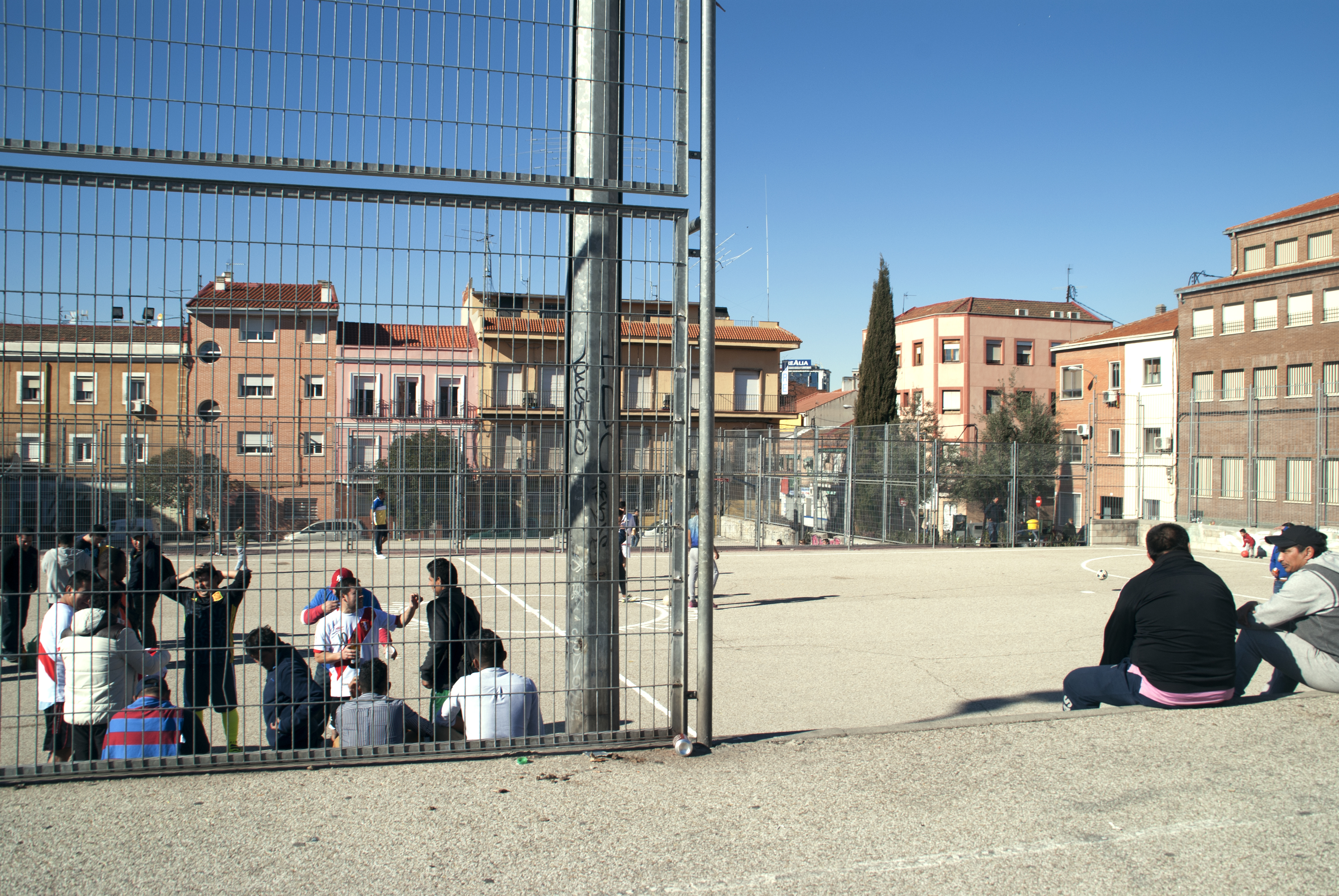Joffre Sanches “Makelele” was a 22-year-old Ecuadorian young man who was found dead on the railroad tracks 5 years ago at District 13 ‘Puente Vallecas’, in the southeastern suburbs of Madrid. Today, his friends and relatives are paying tribute to him by organizing a soccer league at the only field in the area, renamed as ‘Guayaquil Chiquito’. Bachata music in the background, broken glasses all over the ground. Women, reluctant to be pictured, do not play but watch the game. The image I am presenting seeks to inspire for a critical analysis of the multiple violences that underlie social and geographical inequality in a ‘First World’ capital city.
Mitchell Duneier (2016) illustrates how the idea of ‘Ghetto’ has been reinvented for the past 500 years in urban societies to isolate unwanted sectors of the population from main power spaces. Physical segregation intertwines with the symbolic construction of a subaltern `other´ as a dangerous, dirty and morally reprehensible self. District 13 Madrid’s southeastern axis suffer from a stigma that ‘burnt into the body’ (Goffman 1970) has been cyclically reproduced and responded since the middle 20th century. From the non-paved ‘mud neighborhoods’ built during 40s after Spanish Civil War, the ‘drug neighborhoods’ came due to the emergency of heroin in the 80s. Territorial stigma was contested thanks to 70s urban Grassroots (Castells, 1983) and shaped a legacy for the more recent Indignados protests. Today, 50 years after the Lefebvrian ‘Right to the City’ (1968) and only 5 km and 7 subway stops away from Madrid’s postindustrial center, life expectancy of people living in District 13 is on average 6 years shorter compared to its northern antipode of the city, richer and with better services (National Inst of Statistics [NIS] 2017). It also concentrates the lowest average incomes (Urban Audit 2014), the highest unemployment rate (17%, 1 out of 3 long-term unemployed) (NIS 2017) and 30% of foreclosure evictions in the city since 2007 housing bubble collapse (2008-2011: 27.000 homes; PAH 2014).
Nobody wants to talk about how Joffre Sanches died. After 10 years of economic crisis and austerity policies, Madrid has reinforced its neoliberal governance applying a ‘soft-handed’ economic intervention and a ‘heavy-handed’ penal punishment (Wacquant 1993) enhancing the delicate tension between visibility and invisibility in District 13. While ‘central’ Madrid ranks third among European capitals for visitor spending (GCDI 2016) people in this soccer field are subject to visual and physical surveillance not only by frequently police patrols but by the symbolic violence of the whole prison `visuality´ (Mirzoeff 2006) of the built environment. Designed following ‘preventive urbanism’ and ‘zero tolerance’ guidelines, the area consists of rows of poor-quality public housing blocks, barred windows in first and second floors, CCTV-shaped street lights, paved squares and empty spaces with no trees and few benches, suffering the consequences of a long public disinvestment process in the most segregated capital in Europe (Tamaru et al., 2016). The installation of a CCTV system – a new experimental strategy in the Spanish context - planned for 2018 will affect the most attractive streets to potential rent-gap profits (Smith 1979). Junkies, `hoodies´, sexual workers, hawkers and undocumented migrants concentrate the hypervisibilization of these neoliberal policies, media attention and police intervention through a class-based and racialized `stop-and-frisk´.
However, the search for building visual resistance challenging ‘media pornography’ (Wacquant 2009) constantly draws the resilient practices of these communities. The tribute act for Joffre and the occupation of those fields challenges oblivion’s docility. Feminist and decolonial ‘Care City’ arises as an alternative to dominant (in)security´s paradigm for the new Spanish post-crisis Grassroot´s cycle, and subaltern and racialized women should lead it.

Commentary on Rachel Tanur's Works: Africa Rachel with Elephant